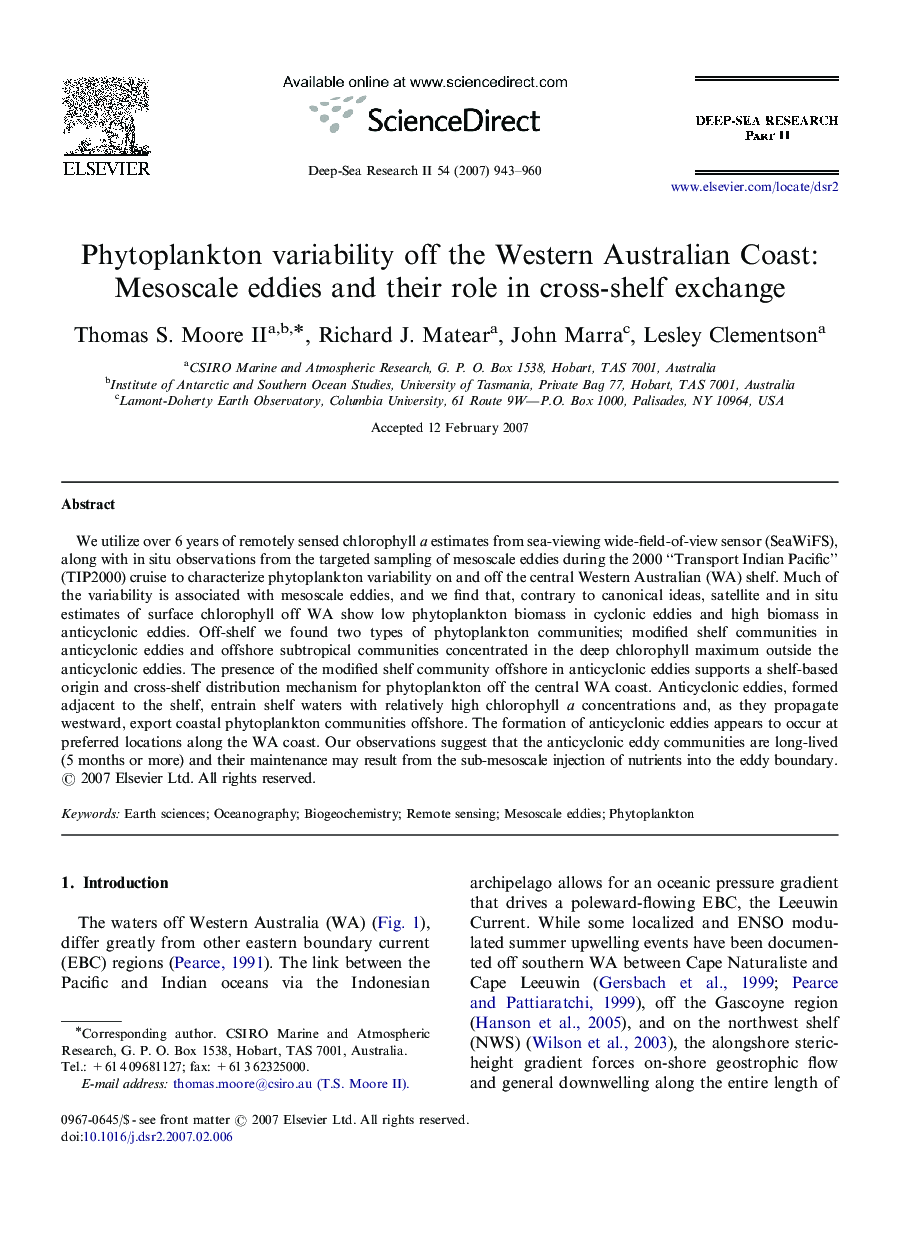| Article ID | Journal | Published Year | Pages | File Type |
|---|---|---|---|---|
| 4538039 | Deep Sea Research Part II: Topical Studies in Oceanography | 2007 | 18 Pages |
We utilize over 6 years of remotely sensed chlorophyll a estimates from sea-viewing wide-field-of-view sensor (SeaWiFS), along with in situ observations from the targeted sampling of mesoscale eddies during the 2000 “Transport Indian Pacific” (TIP2000) cruise to characterize phytoplankton variability on and off the central Western Australian (WA) shelf. Much of the variability is associated with mesoscale eddies, and we find that, contrary to canonical ideas, satellite and in situ estimates of surface chlorophyll off WA show low phytoplankton biomass in cyclonic eddies and high biomass in anticyclonic eddies. Off-shelf we found two types of phytoplankton communities; modified shelf communities in anticyclonic eddies and offshore subtropical communities concentrated in the deep chlorophyll maximum outside the anticyclonic eddies. The presence of the modified shelf community offshore in anticyclonic eddies supports a shelf-based origin and cross-shelf distribution mechanism for phytoplankton off the central WA coast. Anticyclonic eddies, formed adjacent to the shelf, entrain shelf waters with relatively high chlorophyll a concentrations and, as they propagate westward, export coastal phytoplankton communities offshore. The formation of anticyclonic eddies appears to occur at preferred locations along the WA coast. Our observations suggest that the anticyclonic eddy communities are long-lived (5 months or more) and their maintenance may result from the sub-mesoscale injection of nutrients into the eddy boundary.
